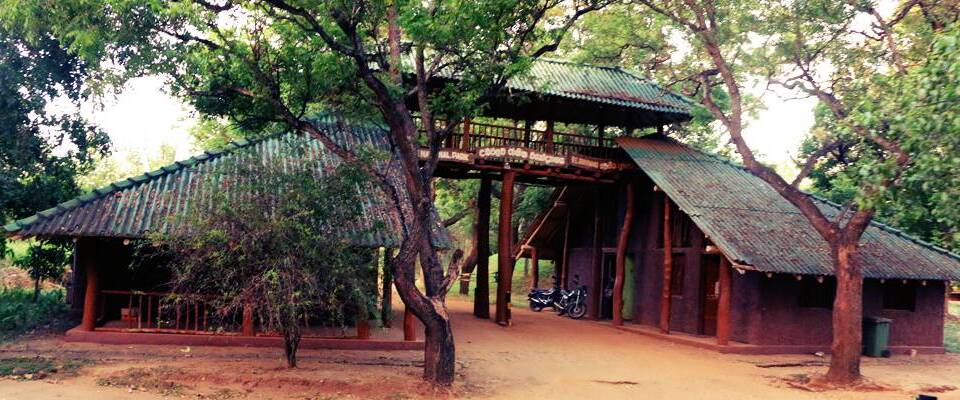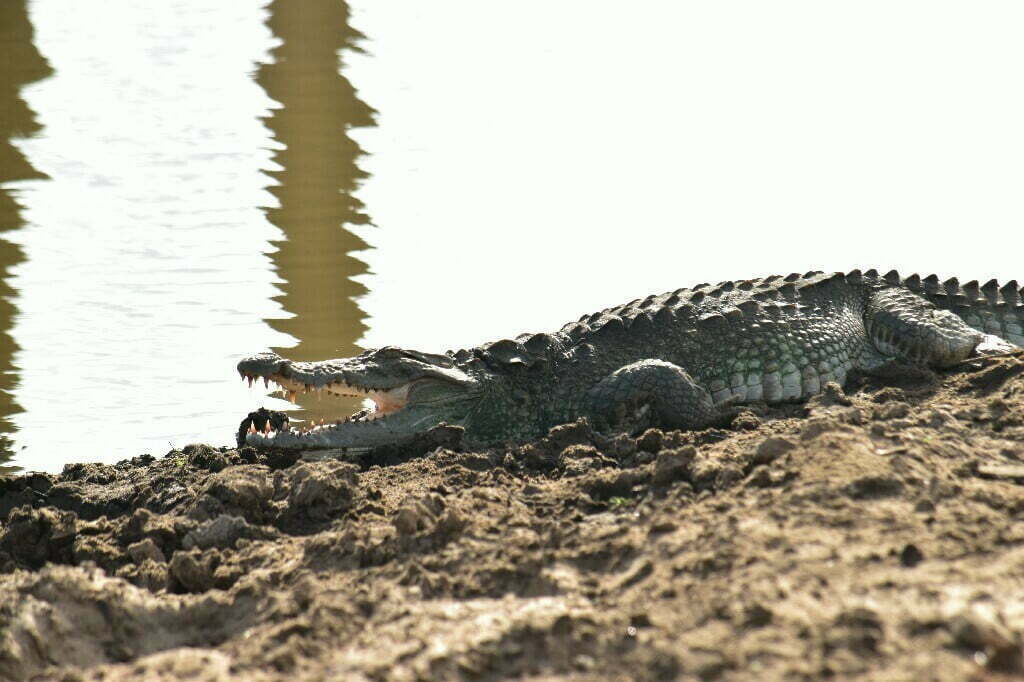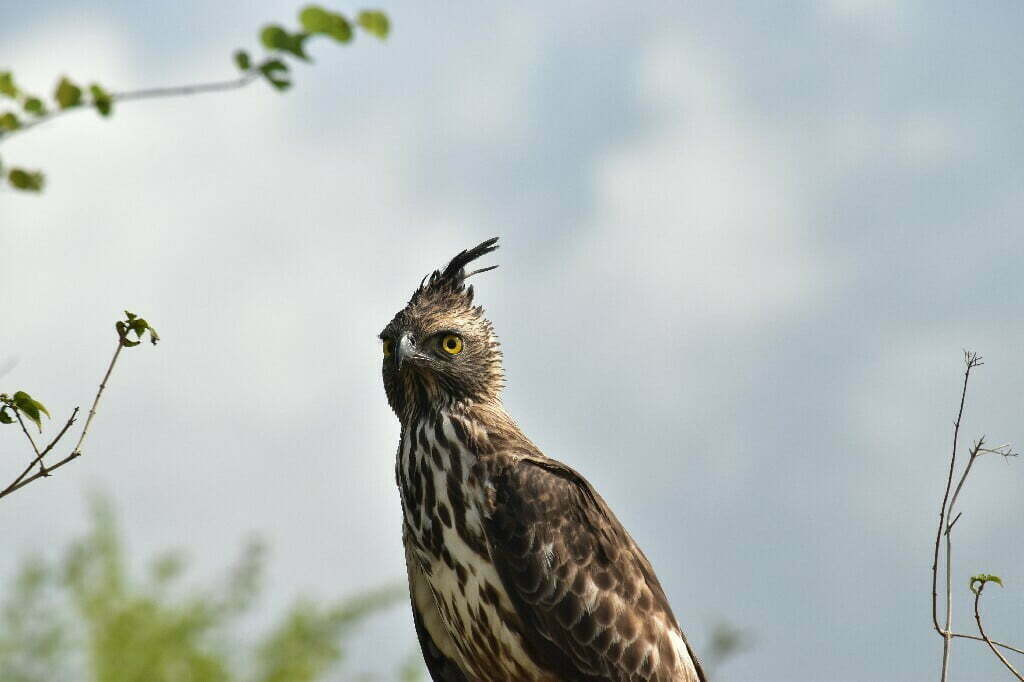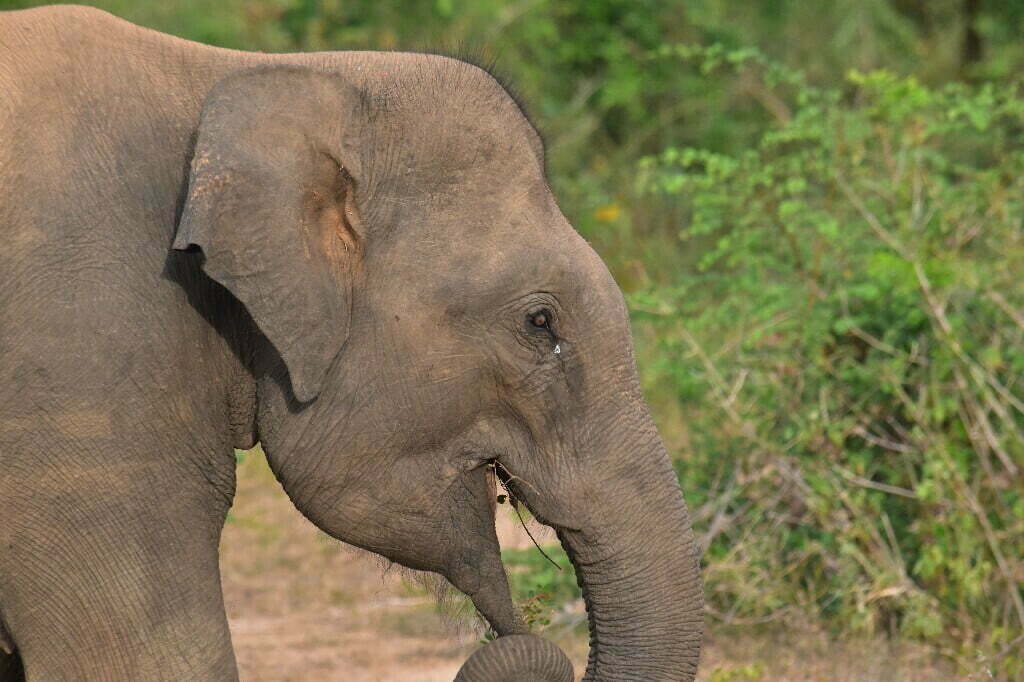Udawalawe National Park
Content
Introduction of Udawalawe National Park
Udawalawe National Park is one of the most famous and greatest among all national parks in Sri Lanka. This is an important protected area that is home to a considerable flora and fauna and also it is an important habitat for Sri Lankan elephants and aquatic birds. The park is 165 kilometers [103mi] away from Colombo. The total area of the Udawalawe National Park is 30,821 hectares [119 sq mi] including the Udawalawe reservoir, which covers 3405 hectares at full capacity. This national park mainly lies on the boundary of the Uva and Sabaragamuwa provinces. Boundary lines of this Udawalawe Nationa Park can be illustrated as follows: Its Southern boundary line is connected to the Udawalawe Thanamalwila road and also Sewanagala sugar plantation is located to the south of this Udawalawe Thanamalwila road. Lunugamwehera National Park is placed on the southeast boundary line of this National Park. While the western half on the left bank of the reservoir is expanded to the Ratnapura District the eastern sector on the right bank is expanded to the Monaragala District. At present, Udawalawe National Park has been remarked as one of the major and popular paradises of tourist destination and also the third most visited national park in Sri Lanka. The ecosystem of this Udawalawe National park has the ability to attract the minds of the entire world towards its affinity.
History of Udawalawe National Park
Udawalawe national park was declared the fifth national park in Sri Lanka on 30th June 1972 at a ceremony presided over by the ministry of shipping and tourism. [Government Gazette Notification No:14]. Udawalawe Nationa Park has been done at the end of the Udawalawe reservoir project. The major intention of this project is to name it a National Park and also to protect the catchment areas of this park by creating a refuge for the wild elephants. The second reservoir which was named Maw-Ara tank was constructed inside the national park between 1991 & 1998. This area was used by the people for their livelihood by doing some shifting/Chena cultivation activities. Those cultivation activities were done by the people before this area has been designated as the Udawalawe National park by the authorities. After being designated as a National Park, all the people left this place and created new habitats which were suitable for them.

Physical features of Udawalawe National Park
Udawalawe National park is widespread through the boundary of dry and wet zones in Sri Lanka, and due to that, it has huge biodiversity which creates by its ecosystem. This national park is surrounded by two major drainage basins of the ‘wall we’ river and ‘maw ara’. This land has the shape of an undulating plain at about 100 meters in elevation and rises to 373 meters at the foothills. There were two natural objects namely, the Kalthota range and Diyawini waterfalls in the northern part of the park. Residual alluvial soil is the major component which includes in the soil of the national park. It has included reddish-brown earth, colonized solonetz, and low humic clays. Granite and gneisses have taken a major space in the park. The northern & western boundaries of the National park are close to the transition zone with the highland or Khondalite series.
The climate of Udawalawe National Park
Uniformly high temperatures and also seasonal rainfall can be seen in the dry zone location of the park because a large part of Udawalawe National Park lies in the dry zone. The climatic condition of this park varies with its location. However, its mean annual rainfall is about 1500 mm (59 in). Excessive rainfall can be seen in the months of October to January and March to May. While the mean annual temperature is about 27-28 °C (81-82 °F). Relative humidity ranges from 70% – 83%. It has an applicable climate condition for all the living organisms who exist in the park.
Ecology of Udawlawe National Park
One who loves to visit this park has an interest to know about its ecosystem. When talking about the ecology of Udawalawe Nationa Park, natural surroundings and the animals play a major role in it. Among different varieties of animals, elephants take an important place here. Apart from elephants, different species of birds create marvelous beauty in the ecosystem. There are different types of natural resources like Dry mixed evergreen forests, riverine forests, reservoirs, scrub, grassland, shrubs, Walawe River, marshes, and also tributaries, etc inside the park. Dry mixed evergreen forests and riverine forests include different species of plants (trees). Not only these resources but also there is a large number of animal varieties inside the park including different species. Mainly there are birds, amphibians, reptiles, mammals, and fish. In detail, there are 94 species of plants exist inside this park as also 43 species of mammals, 184 species of birds, 12 species of amphibians, 33 species of reptiles, and also 21 species of fish. All these types of animals help the existence of the ecosystem. A type of microorganism can be seen in the Udawalawe reservoir. It belongs to the group algae. There are two main types namely: green algae and blue-green algae. Their species also occurred in the reservoir. The wonder of the ecosystem of this park has been made by the abundance of all these natural resources and living organisms.
Flora of Udawalawe National Park
The beauty of the ecosystem mainly creates by the flora system. It almost helps to keep the greenish look inside the park. The major vegetation type of the park includes dry mixed evergreen forest, riverine forest, scrub, grassland, shrubs, teak plantation, etc. The teak plantation is an activity done by the farmers before this area has designated as the Udawalawe National Park. Dead trees standing in the reservoir create a visual image in people’s minds.
Dry mixed evergreen forest
The dry mixed evergreen forest has taken a major part of this park by creating a greenish look. it includes several types of canopy species. The tallest canopy tree which exists here is the Palu tree (Manilkara hexandra) and also it spread throughout this park. Some valuable timber communities namely Palu, Weera, Burutha, etc exist here. Different types of canopy species can be seen inside this forest. Among them some common canopy species are: Sterculia foetida, Chloroxylon swietenia, Drypetes sepiaria, Pterospermum suberifolium, Cassine glauca, Diospyros ebenum etc.
Riverine forest
Another resource that creates wonder in this ecosystem is a riverine forest which can be found along the banks of the Walawe River. This part includes 0.15% of the area. There is some endemic plant (trees) species that can be seen here. Few of them can be illustrate as follows: Hopea cordifolia, Diospyros naladarica, Garcinia spicata, Terminalia arjuna, Haldina corbifolia, Madhuka longifolia, Hydnocartus venenata etc.
Grassland and scrub
Grassland and scrub also create biodiversity in this nature. The area covered by scrub is around 50.4% (15800 ha) of the total while the area covered by grassland shows 31.7% (9939.3 ha) of the total area of the park. Mainly there are two types of scrub present in this park. Some commonest species are: Lantana camara, Asparagus racemosus, Carissa spinarum, Ziziphus oenoplia, Flueggea leucopyrus, Benkara malabarica, Streblus asper, Bauhinia racemosa, Scutia myrtina, Dichrostachys sinerea, Eupatoriun odoratum, etc
all these natural resources provide great support and also an attractiveness for the existence of the ecosystem (ecology) of this park. With the natural beauty of this park, it can be named one of the most wonderful places in Sri Lanka.
Fauna of Udawalawe National Park
This is the sixth-largest animal sanctuary in Sri Lanka. Part of the wildlife of Udawalawe mainly includes its fauna and its natural habitats. It is populated by different species of vertebrates and invertebrates according to the main classification of animals. With the above classification, mainly there are a few well-known classes of vertebrates namely: Chondrichthyes & Osteichthyes (Fish), Amphibians, Reptiles, Aves(Birds), and Mammals can be seen in this park while a few species of butterflies belonging to the class invertebrates can be seen here. It is estimated that nearly 135 species of butterflies exist in Udawalawe National Park.
Fish
There are 21 species of fish varieties that belong to 9 families found in the Udawalawe National Park. Among them, five species are endemic while 7 species are exotic. However, the number of endemic species is relatively low and it shows a percentage of 11% of the national total of 44 species while the exotic species show a percentage of 22% of the total species found in the park. Mainly the exotic varieties of fish confined to the reservoir and tanks. Threatened species have not been found yet. Among all the species the most abundant family is the Cyprinidae while the commonest genus is Puntius which belongs to the family Cyprinidae. The endemic fish species recorded in the park is Garra ceylonensis. Mainly two species of fish were recorded in ponds and water holes while the other species can be seen in the Walawe River, Udawlawe reservoir, and also in other tanks. It has been recorded that there are 7 exotic species that can be found here. Mainly all these exotic ones can be found due to the activities done by the Freshwater Fish Breeding Station of the Ministry of fisheries in Udawalawe. A few species of fish varieties that can be seen mainly inside this park can be named as follows: Puntius sarana, Labeo dussumieri, Puntius Chola, Garra ceylonensis, Catla, Rohu, Gourami, Oreochromis niloticus, etc. In the reservoir of Udawlawe National park some important food fish varieties can be found namely: Rohu, Catla, Oreochromis spp, and Giant gourami, etc.
Amphibians
The highest percentage of extinct and threatened amphibian species is recorded in Sri Lanka. It has been recorded that 111 species of amphibians belonging to 7 families can be seen in Sri Lanka. Among them, nearly 12 species of amphibians can be found inside the Udawalawe National Park. Out of the 4 species of amphibians are endemic to the park. These animals have the ability to live both in water and on land. Mostly, these amphibians like to have their habitats inside the Riverine Forest, Grassland, and Scrub inside the park. The highest amount of amphibians can be found inside the Riverine Forest while the lowest is recorded in the Scrub and Grassland. The most important fact that can be seen here is the conservation of herpetofauna species evident from its relative species for a place that lies in the dry zone. In the above-mentioned variety, we can see one amphibian genus called Philautus which is endemic to Sri Lanka. Species of amphibians are threatened due to several reasons, but the remaining species are mostly helpful to create the biodiversity of this national park
Reptiles
Udawalawe national park is home to 23 species of reptiles out of these species 8 species are endemic to the park. Mainly, there are mugger crocodiles, painted-lip lizards, oriental garden lizards, Asian water monitors, Bengal monitors, and also 30 species of snake varieties that can be seen in the park. Their habitats are recorded from undisturbed and disturbed Dry-Mixed Evergreen Forest, Grassland, Scrub, and in the reservoir. When categorizing those reptiles according to their habitats, the highest percentage of them can be found in undisturbed Dry Mixed Evergreen Forest, while the intermediate percentage found in Grassland and the lowest in Scrub. A few species that belong to those habitats are:
Otocryptis nigristigma and Calotes ceylonensis can be found equally in disturbed and undisturbed Dry Mixed Evergreen forests.
Apart from them, Eutropis Tamanna (The endermic Tammanna Skink) Is a newly recorded reptile variety for the Udawlawe National Park that can be found in Grassland comprised of native grass species such as illuk and also in undisturbed Dry-Mixed Evergreen Forest.
A few snake varieties namely: the Colubrid snake (Boiga beddomei), Striped flying snake (Chrysopelea taprobanica), Trinket snake (Coeloganthus Helena), Rock python (Python molurus) can be found here and they are a new recorded rarely found species inside the park. Some of them can be seen inside disturbed Dry-mixed Evergreen Forests. in addition to the above-mentioned varieties of reptiles, two endemic genera of reptiles occur inside this park. They are Nessia and Lankascincus.

Birds
Udawalawe is one of the best attractive places for bird watching which is home approximately to 225 species of birds. Among them, 33 species are migratory birds. There are some species of endemic birds namely Sri Lanka Swallow, Sri Lanka green pigeon, Sri Lanka woodshike, Sri Lanka jungle fowl (Gallus Lafayettii), Sri Lanka spurfowl (Galloperdix bicalcarata), Red-faced malkoha, Sri Lanka grey hornbill, Sri Lanka brown-capped babbler, Sri Lanka hanging parrot, (Loticulus berylliosis).
The highest species of birds can be seen in Grassland, Dry-mixed evergreen forests,s and also in Riverine forests while the lowest species of birds can be found in Scrub. Month of November to month of March nearly 110 species of migratory birds can be seen. This period is known as the migrant season of birds. Migratory bird species like Booted eagle, Rosy starling, Common kestrel, Harris’s hawk, Western yellow wagtail, Citrine wagtail, Forest wagtail, Little ringed plover, Whiskered tern, Common sandpiper, Black-capped kingfisher, Wood sandpiper, etc. can be seen in this season.
In addition to that other species of birds that can be seen here are: Grey heron, Indian pond heron, Spot-billed pelican, Little cormorant, Great egret, Cattle egret, Little egret, Painted stork, Intermediate egret, woolly-necked stork, Green bee-eater, Yellow-wattled lapwing, Crested trees swift, etc can be seen inside this park.
Some species of water birds are having their habitats inside places near the reservoir as they like to survive in such places. A few species of water birds namely: Cormorants, Spot-billed pelicans, Asian openbill, Painted storks, etc can be found inside the reservoir.
The red-faced malkoha and Sirkeer are having their habitats inside the Riverine forest vegetation as it provides a harboring for those species. In 1976, the first authentic nest of the Red-faced malkoha species has been recorded inside this park.
The habitats of all these bird varieties accumulate a richness to the biodiversity. This park attracts people’s minds, as this is an elegant place for photography with the existence of these numerous bird varieties.

Mammals
Udawalawe National Park is one of the most famous destinations to watch elephants. Not only for that but also this is an excellent place to visit many species of other animals. Among all the varieties of animals,43 species of mammals can be seen inside the park. They belong to 25 genera and 16 families, including seven species of rats, various bat species, six species of ungulates, three civets, three primates, three mongoose species, the leopard (Panthera pardus), the jungle cat (Felis chaus), Asian elephant (Elephas maximus), the black-naped hare (Lepus nigricollis), the golden jackal (Canis aureus), etc.
This park has the ability to attract a large number of visitors eye contact with the existence of a large population of Asian Elephants. People can easily witness them inside the reservoir area. As it contains a combination of greenish and bluish look inside the reservoir and also when some elephants can be visited there, it will awaken the wonders of nature in the people’s minds. Anyway, this park has the ability to sustain a large number of Sri Lankan elephants. Mainly these elephants can be seen in open grassland habitats and they take an important place inside this park.
In addition to the Asian Elephants, the most common species that can be found inside the park are: The wild Boar(Sus scrofa), Toque Macaque, The Black Rat(Rattus rattus), Grey Langur(Seminopithecus priam), Spotted Dear(Axis axis), etc. There are some endemic mammals. It has been recorded that six endemic species of mammals can be seen here, namely: Flame-Stripped Jungle Squirrel(Funambulus lanyards), SriLankan Spiny Mouse(Mus fernandoni), Toque Monkey(Macaca Sinica), SriLankan Golden Striped-Backed Palm Civet(Paradoxurus meminna), etc. One of the above-mentioned endemic mammals called the Spiny Mouse(Mus Fernando) is critically endangered while eleven species of mammals are nationally threatened. one species called the Wild Buffalo(Bubalus arnee) is an exotic animal that can be seen here.
The vegetation of these mammals is highly rich in the Grassland and Undisturbed Dry-mixed Evergreen forest habitats. Sometimes the elusive Jungle Cat(Felis chaus)can be visited by the people as they glimpsed on the road at all times of the day and night. Udawalawe National Park is one of the best places in Sri Lanka to visit such varieties of mammals. The endemic Ceylon Spiny mouse has been recorded in Udawalawe National Park in 1989. Apart from the above-mentioned categories, several species of small mammals are often seen inside this park namely; Common Rat(Rattus rattus), White-tailed Wood Rat(Madromys blanfordi), Antelope Rat(Tatera indica), Soft-furred Metad(Millardia meltada), SriLanka Spiny Mouse(Mus fernandoni), Painted Bat(Kerivoula picta), Indian Field Mouse(Mus booduga).
In Udawalawe National Park, we can see a few mammals that belong to the family Felidae. They are The Rusty-Spotted Cat, Fishing Cat, and Sri Lankan Leopard. Here, Sri Lankan Sloth Bear can be rarely seen. Mammals have the ability to live in any climatic conditions, they can exist in both cold and hot climates. So the vegetation inside this park provides great support for these mammals to survive here without any discrimination. However the abundant of all the species of Asian Elephants, Ceylon Spotted Deer, Grizzled Giant Squirrel, Leopard, Otter, Sloth Bear, SriLankan Spotted Chevrotain, Thick-tailed Pangolin, Toque Macaque, Water buffalo, Wild Boar, etc have been accumulated a richness to the biodiversity inside the park.

